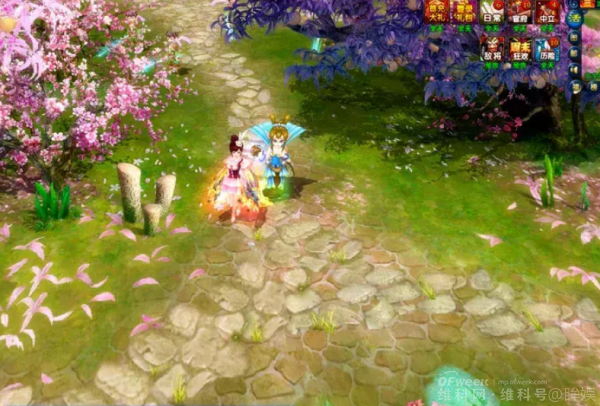Glacier Network: A Barefoot Runner After the Incremental Market Recedes
![]() 11/19 2024
11/19 2024
![]() 695
695
In a sense, Glacier Network can be considered the "King of Games" on short video platforms.
This is because most of the educational mini-game ads users see while browsing short videos, including but not limited to "Save the Annoying Dog," "Arithmetic Run," "Screwdriver," and "Catch the Thief," can all be found in Glacier Network's games.
After Glacier Network's core IPs "Zhengyuan" and "Longwu" gradually lost market appeal, secondary gameplay ad buying has become Glacier Network's core business model since 2022.
The characteristics of the secondary gameplay ad buying model are relatively low development thresholds and minimal capital investment.
Is Glacier Network profitable from this seemingly lucrative business? More accurately, it is "profitable if..."
01
Buying ads is not a lost cause; it's a preventive measure.
Glacier Network's secondary gameplay ad buying model implemented in early 2022 brought significant benefits to the company.
That year, the company's operating revenue surged 304% year-on-year to 2.05 billion yuan, and net profit climbed to 129 million yuan, successfully turning losses into profits.
In 2023, Glacier Network continued to increase investment, with operating revenue growing another 36% to 2.78 billion yuan, a new high since its listing, and full-year net profit further increasing to 273 million yuan.
However, entering 2024, Glacier Network's performance experienced a sharp decline. In the first three quarters alone, the company's net loss reached 467 million yuan, nearly wiping out all profits earned in the previous two years.
The reason for the loss is straightforward.
The core of the secondary gameplay ad buying model is to attract traffic through substantial marketing investments, which are then converted into sales. The primary cost is marketing.
Taking 2022 as an example, Glacier Network's sales and marketing expenses were 1.35 billion yuan, with operating revenue of 2.05 billion yuan and net profit of 129 million yuan.
In 2023, with increased efforts, sales and marketing expenses reached 1.743 billion yuan, and operating revenue came in at 2.783 billion yuan, with profits reaching a new high of 273 million yuan.
Then, in 2024, Glacier Network continued to increase marketing investment, with sales and marketing expenses reaching 1.911 billion yuan in the first three quarters. However, looking back, the company's total operating revenue for the first three quarters was only 1.983 billion yuan.
With operating revenue lower than marketing expenses, it is natural that there were alarming losses.
More money was spent on advertising, yet revenue decreased. While there are multiple reasons for this, the overall change in the industry environment is undoubtedly a significant factor. In the stock market, competition has intensified further. During this year's summer vacation, high-quality game products like "Honor of Kings," "Game for Peace," "Genshin Impact," and "Honkai: Star Rail" also adopted aggressive ad buying strategies, with investments even exceeding those of game companies like Glacier Network that heavily rely on ad buying for new users. This naturally diminished the latter's ad buying effectiveness.
Additionally, the process of attracting players through the secondary gameplay ad buying model is often fraudulent. Players are usually attracted by casual educational mini-games in ads but are often directed to numerical growth games focused on rapid commercial monetization.
This mismatch leads to decreased player satisfaction. After disappointments from 2022 to 2023, many players developed resistance to the secondary gameplay ad buying model, making it ineffective in 2024.
Facing market and investor scrutiny, Glacier Network did not abandon the ad buying model.
At the first-quarter earnings call in April this year, Chairman and CEO Liu Heguo made a remark worth pondering:
"The company will determine different user acquisition models based on product types."
Put simply, the choice of sales method is not arbitrary but based on product types. Without the secondary gameplay ad buying model, does Glacier Network's games still have market competitiveness and can they achieve natural user growth? The answer is self-evident.
Therefore, for Glacier Network, buying ads is not a lost cause; it's a preventive measure.
02
Barefoot Running After the Tide Recedes
Glacier Network's development trajectory shares representative characteristics with many struggling game companies.
From a financial perspective, Glacier Network has experienced three significant revenue growth phases:
Initial Success: In 2012, the company's first game, "Zhengyuan Online," was an immediate hit, attracting over 200,000 concurrent players on its first day, establishing the company's position in the game market and successfully creating the two major game IPs "Zhengyuan" and "Longwu." In 2016, these two games contributed 40.06% and 49.34% of the company's revenue, respectively.

Mobile Dividend: With the rise of mobile gaming, Glacier Network timely launched mobile versions of "Zhengyuan Online" and "Longwu" in 2018, leveraging the return of veteran players to mobile platforms, and performance surged again. In 2020, the company's mobile games contributed 91.02% of revenue, with "Zhengyuan Mobile" accounting for 32.97% and "Longwu Mobile" for 26.88%.
Secondary Gameplay Ad Buying: From 2022 to 2023, Glacier Network successfully attracted a large number of new players through the secondary gameplay ad buying strategy, achieving another revenue growth.
However, reviewing these three revenue growth phases, it is evident that Glacier Network's only true success in reaching core gamers was with "Zhengyuan Online" during its initial period. The other two growth phases mainly relied on the expansion of the mobile market, new users brought by short video platforms, and the exploration of some overseas markets. Glacier Network has been swimming in incremental markets without truly addressing the deep needs of core gamers.
Therefore, when the incremental market dividend faded in 2024, Glacier Network's performance quickly declined, exposing the company's inadequate understanding of core gamer needs and product R&D capabilities.
Financial data further reveals this issue: From 2020 to 2023, the company's R&D expenses increased annually, from 141 million yuan to 535 million yuan, but the R&D expense ratio declined, from 36.56% to 17.46%, indicating that the company's R&D investment did not effectively translate into enhanced product competitiveness.
So, where did the profits go?
According to Yangtze Evening News, dividends have become the primary means of profit distribution for Glacier Network. From 2016 to 2020, the company allocated about 40% of its annual net profit to dividends, until 2021 when the value of its core IPs gradually depleted and the company began to incur losses. However, after a brief revenue recovery through secondary gameplay ad buying in 2022, the company again adhered to a large dividend strategy, with dividend payments of 305 million yuan and 277 million yuan in 2022 and 2023, respectively, exceeding net profit levels for the same periods.
03
Glacier Games, Vanishing in China
While it may be slightly biased to predict a bleak future for Glacier Network solely based on its shortcomings in R&D, the company's recent moves do provide new analytical perspectives for market observers.
According to the latest third-quarter financial report, Glacier Network is actively preparing to launch a series of core products, including "Hero Clash," "Epic War," "Titan War," "Merge Topia," and "Kingdom Go!," onto the international stage. This move signifies Glacier Network's accelerated strategic layout in overseas markets, aiming to further expand its business boundaries and market share by strengthening its overseas operational capabilities.
Meanwhile, Glacier Network announced on the evening of October 21 that it had established a subsidiary, Lingyun Network, in Changsha. This subsidiary will focus on user operations, customer service, and live streaming-driven distribution, among other segmented business needs. The company stated that this move aims to improve and optimize its game business layout, aligning with the company's long-term strategic planning and game business development needs.
Notably, since 2024, the emerging model of live streaming-driven distribution has emerged in the game distribution sector. This model effectively promotes game downloads and direct in-app purchases through live streamers showcasing game features and interacting with viewers in real-time, creating new growth points for game distribution.
Both actions represent increased investment in distribution methods.
Given the increasingly competitive game market and Glacier Network's lack of new, market-competitive games for many years, choosing to further consolidate and expand the distribution sector rather than hastily investing heavily in new game development may be a more prudent strategy.
However, while this strategy can provide stable revenue for the company in the short term, the lack of continuous innovation support may still limit its long-term development potential.





